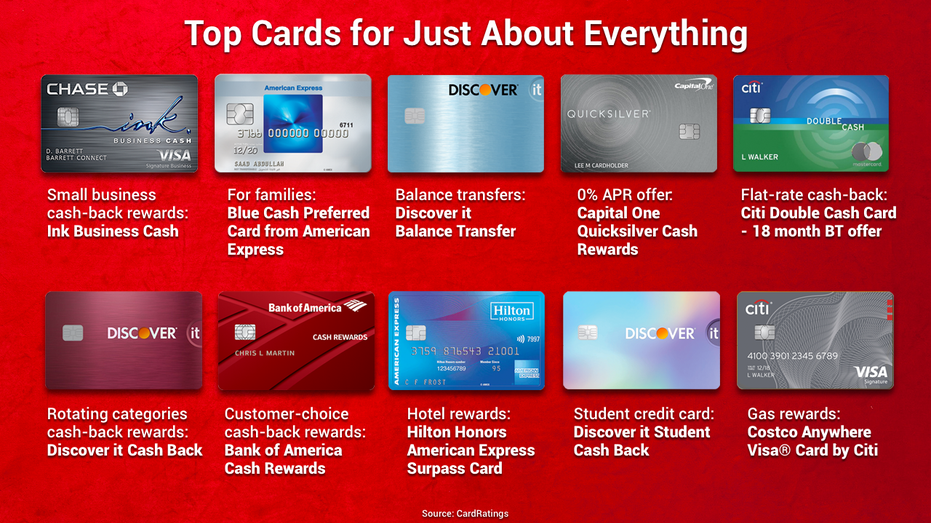Unlocking Business Funds with Bank Statement Loans
Welcome to an article that will shed light on how businesses can access much-needed funds through bank statement loans. This innovative funding solution has been helping entrepreneurs unlock capital quickly and easily, without the hassle of extensive paperwork or a pristine credit history. Whether you’re a business owner looking to expand, invest in new equipment, or simply cover unforeseen expenses, bank statement loans could be the perfect solution for you. Let’s explore how this financial tool can help your business thrive.
What Are Bank Statement Loans?
Bank statement loans are a type of business loan that allow small business owners to qualify for financing based on their bank statements rather than traditional financial documents such as tax returns or profit and loss statements. This type of loan is ideal for entrepreneurs who have a steady revenue stream but may not have the paperwork to prove their income in a traditional way.
With bank statement loans, lenders will review the business owner’s bank statements over a certain period of time to determine the average monthly income. This allows lenders to assess the business’s financial stability and repayment ability by looking at actual cash flow rather than relying on tax returns that may not accurately reflect the business’s current financial situation.
One of the key benefits of bank statement loans is that they provide a more flexible option for small business owners who may not qualify for traditional loans due to fluctuating income or a lack of collateral. This type of financing can be particularly beneficial for self-employed individuals or small businesses that are just starting out and may not have a long financial track record.
Bank statement loans typically have higher interest rates and shorter repayment terms compared to traditional loans, but they can be a valuable resource for businesses that need quick access to capital. Additionally, bank statement loans often have a faster approval process since they do not require extensive documentation and paperwork, making them a convenient option for small business owners who need funds quickly.
Overall, bank statement loans provide a viable alternative for small business owners who may not meet the strict requirements of traditional lenders. By using bank statements as the primary means of assessing a business’s financial health, lenders can provide financing to a wider range of entrepreneurs and help small businesses thrive and grow.
Qualifications and Requirements for Bank Statement Loans
When applying for a bank statement loan for your business, there are certain qualifications and requirements that you need to meet in order to be approved. These loans are particularly popular among entrepreneurs and small business owners who may not have traditional proof of income or strong credit histories. Here are some of the key qualifications and requirements for bank statement loans:
1. Minimum Time in Business: Most lenders require that your business has been operating for a minimum amount of time before they will consider your application for a bank statement loan. This is typically around 12 months, but some lenders may require a longer track record of successful business operations.
2. Regular Deposits: One of the main qualifications for a bank statement loan is having consistent and regular deposits into your business bank account. Lenders will look at your bank statements to assess the stability of your income and cash flow. They will want to see that your business is generating enough revenue to cover the loan payments.
3. Minimum Revenue: Lenders will also look at your business’s revenue to determine if you qualify for a bank statement loan. They will want to see that your business is generating enough income to cover the loan amount you are seeking. Typically, lenders will require a minimum annual revenue that can vary depending on the lender and the size of the loan you are applying for.
4. Credit Score: While bank statement loans are known for being more flexible than traditional loans when it comes to credit requirements, lenders will still take your credit score into consideration. A higher credit score can increase your chances of being approved for a bank statement loan and may also help you secure a lower interest rate.
5. Personal and Business Bank Statements: When applying for a bank statement loan, you will need to provide both personal and business bank statements. These statements will show your business’s cash flow, expenses, and overall financial health. Lenders will use this information to assess your eligibility for the loan and to determine the terms of the loan offer.
6. Business Plan: Some lenders may require a detailed business plan as part of the application process for a bank statement loan. This plan should outline your business goals, strategies for growth, and how you plan to use the funds from the loan. A well-thought-out business plan can help lenders feel confident in your ability to repay the loan.
Overall, bank statement loans can be a great option for entrepreneurs and small business owners who may not qualify for traditional financing. By meeting the qualifications and requirements outlined above, you can increase your chances of being approved for a bank statement loan and secure the funding you need to grow your business.
Benefits of Bank Statement Loans for Small Businesses
Bank statement loans are a great option for small businesses that may not qualify for traditional loans. These types of loans rely on the business owner’s bank statements to determine their eligibility and loan amount. There are several benefits to choosing a bank statement loan for your small business:
1. Easy Approval Process: One of the main advantages of bank statement loans is the easy approval process. Traditional loans often require extensive paperwork and documentation, which can be time-consuming and tedious. Bank statement loans, on the other hand, require minimal documentation and are typically approved much faster. This can be crucial for small businesses that need access to funds quickly.
2. Flexible Eligibility Requirements: Bank statement loans have more flexible eligibility requirements compared to traditional loans. Instead of focusing solely on credit scores and financial statements, these loans consider the business owner’s bank statements to determine eligibility. This means that small businesses with less-than-perfect credit or limited financial history may still qualify for a bank statement loan.
3. No Collateral Required: Another significant benefit of bank statement loans is that they typically do not require collateral. This can be a game-changer for small businesses that may not have valuable assets to use as collateral. Without the need for collateral, business owners can secure funding based on the strength of their bank statements alone.
Furthermore, the lack of collateral reduces the risk to the business owner, as they do not have to worry about losing personal or business assets if they are unable to repay the loan. This can provide peace of mind and financial security for small business owners.
4. Increased Borrowing Limits: Bank statement loans often have higher borrowing limits compared to traditional loans. This can be beneficial for small businesses that need access to larger amounts of capital to fund growth, expansion, or other business needs. With a bank statement loan, business owners can secure the funding they need without being limited by strict borrowing caps.
5. Improved Cash Flow Management: Bank statement loans can also help small businesses better manage their cash flow. By providing access to funds quickly and without the need for collateral, business owners can address immediate financial needs or take advantage of growth opportunities. This can help maintain a healthy cash flow and keep the business running smoothly.
In conclusion, bank statement loans offer numerous benefits for small businesses, including easy approval processes, flexible eligibility requirements, no collateral requirements, increased borrowing limits, and improved cash flow management. These loans can be a valuable financial tool for small business owners looking to secure funding quickly and efficiently.
Comparing Bank Statement Loans to Traditional Business Loans
When it comes to financing options for small businesses, bank statement loans have become increasingly popular. These loans are designed for business owners who may not have the best credit history or traditional financial documents to qualify for a traditional business loan. Let’s take a closer look at how bank statement loans compare to traditional business loans:
1. Qualification Requirements: Traditional business loans typically require extensive paperwork, including tax returns, profit and loss statements, and a solid credit history. On the other hand, bank statement loans rely on a business’s cash flow and bank statements to determine eligibility. This means that even if a business owner has a less-than-perfect credit score, they may still qualify for a bank statement loan based on their consistent cash flow.
2. Approval Process: Traditional business loans can take weeks or even months to get approved, as lenders carefully review all financial documents and credit history. In contrast, bank statement loans have a much quicker approval process. Since the loan decision is based on the business’s cash flow and bank statements, approval can happen within just a few days.
3. Loan Amounts: Traditional business loans typically offer higher loan amounts than bank statement loans. This is because traditional lenders consider various factors, such as credit history and collateral, when determining loan amounts. Bank statement loans may have lower loan limits, but they can still provide enough capital for small businesses to meet their financial needs.
4. Flexibility: One of the key advantages of bank statement loans is their flexibility. Traditional lenders often have strict guidelines for how loan funds can be used, such as for purchasing equipment or real estate. Bank statement loans, on the other hand, allow business owners to use the funds for a variety of purposes, including working capital, inventory, marketing, or any other business expenses. This flexibility can be a game-changer for small businesses looking to grow and expand.
In conclusion, bank statement loans offer a more flexible and accessible financing option for small businesses compared to traditional business loans. They provide an alternative for business owners who may not meet the strict requirements of traditional lenders but have a steady cash flow. Ultimately, the choice between a bank statement loan and a traditional business loan will depend on the specific needs and circumstances of the business owner.
How to Apply for a Bank Statement Loan for Your Business
Applying for a bank statement loan for your business is a straightforward process that can provide much-needed financial assistance. Here are some steps to help guide you through the application process:
1. Research Lenders: The first step in applying for a bank statement loan is to research different lenders that offer this type of financing. Look for lenders that have experience working with small businesses and understand the unique needs of entrepreneurs.
2. Gather Documents: Before applying for a bank statement loan, you will need to gather documents that demonstrate your business’s financial health. This may include bank statements, tax returns, profit and loss statements, and business licenses.
3. Calculate Loan Amount: Determine how much money you need to borrow for your business and calculate a realistic loan amount. Consider how the funds will be used and how they will benefit your business in the long run.
4. Complete Application: Once you have selected a lender and gathered all necessary documents, you can begin the loan application process. Be prepared to provide information about your business, including its history, financial performance, and future plans.
5. Provide Bank Statements: One key component of a bank statement loan is providing your bank statements as part of the application process. Lenders will use these statements to assess your business’s cash flow and financial stability.
When providing your bank statements, it is important to ensure they are up-to-date and accurately reflect your business’s financial activity. Lenders will use this information to determine your eligibility for a loan and assess your ability to repay the funds.
6. Wait for Approval: After submitting your application and supporting documents, you will need to wait for the lender to review your information and make a decision. This process can take anywhere from a few days to a few weeks, depending on the lender’s internal processes.
7. Review Terms: If your loan application is approved, be sure to carefully review the terms and conditions of the loan before accepting the funds. Pay close attention to the interest rate, repayment schedule, and any fees associated with the loan.
By following these steps, you can successfully apply for a bank statement loan for your business and access the financial support you need to grow and thrive. Remember to work with a reputable lender that understands your business’s unique needs and can provide personalized assistance throughout the loan application process.






